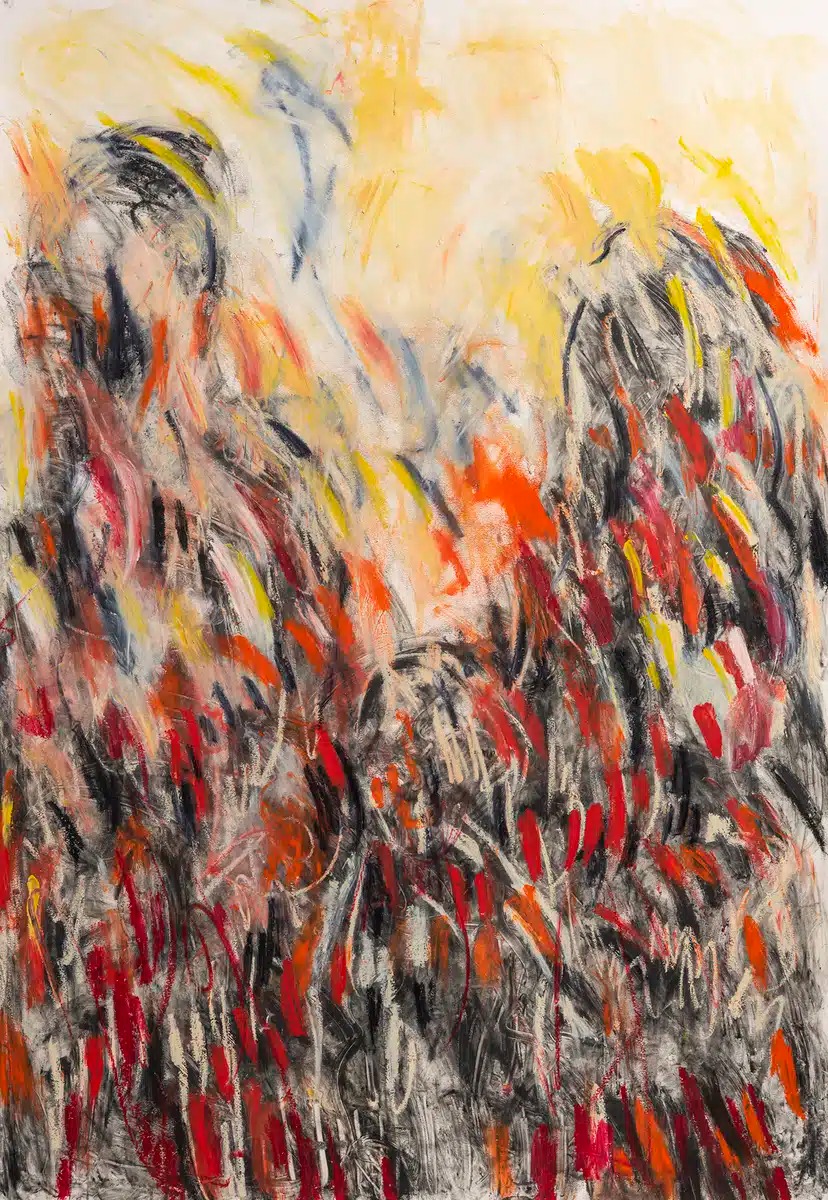Freedom that brings peace is not mere escape from restraints. It is the ongoing refinement of our character that allows our better self to prevail. View the study sheet here. Watch the recording here.

The Tale of Sinuhe is one of the earliest works of fiction to explore the cycles of order and turmoil in the life of a non-royal individual. Written in about 1800 BCE, the tale is an account of Sinuhe, a courtier in Pharaoh’s palace.
While away from the palace on an expedition with the Pharaoh’s son, Sinuhe overhears a messenger telling the royal children about the death of Pharaoh. A sovereign’s death portends chaos. More personally for Sinuhe, something he hears in the exchange between the messenger and the royal children sends him into a panic. That something remains undescribed, subterranean to the narrative. Sinuhe hides in bushes and then sets out into the desert, abandoning his comfortable life in Egypt.
Nearly fatally dehydrated, Sinuhe encounters a Syrian chieftain who recognizes him as an Egyptian and restores him back to health. Sinuhe then meets a Syrian/Canaanite prince who invites him to live with him in Syria/Canaan. Impressed with Sinuhe’s skills and integrity, the prince encourages Sinuhe to marry his daughter and places him in charge of part of his realm. There Sinuhe engages in combat with challengers, gains a reputation as a great warrior and consolidates power and wealth.
Despite his good life on foreign soil, Sinuhe longs to return to his place of origin, to live out his final days in Egypt. His separation from Egypt, his wanderings across the expanse of Syria and Canaan describe Sinuhe’s dis-ease and anxiety, even with his accumulation of wealth and power. He knows that he will not have peace until he returns to Egypt, his land of order.
Sinuhe prays for this return, restoration and peace. He receives an invitation from the new Pharaoh to return to Egypt. Kneeling before Pharaoh, Sinuhe is overcome with a dissociative feeling, not quite conscious of himself. Pharaoh informs Sinuhe that he has no ill will toward him, that it was Sinuhe’s own heart which had carried him away.
Pharaoh gifts Sinuhe a sarcophagus of gold and lapis lazuli. Sinuhe lives out his final days living close to the palace, watching workers construct his tomb. Whatever its source, Sinuhe’s anxiety and sense of chaos has been eased by his return home and by the construction of a tomb, a symbol of a link between the imperfect world of humans and the perfection of the otherworld. Everyday chaos is transcended by the promise of the eternal bliss of peace.
Chaos and order. Every civilization has its ways to explain the existence of disorder. Cultural myths are designed to dispel the impact of chaos on human life. They reveal a structure, coherence and meaning not otherwise evident. Rituals of renewal serve as pathways back to order.
Torah offers a sacred mythology about chaos and order as well. But the return to order it points to is not the promise of eternal bliss. It is one of never-ending communal and self refinement. And the book of Leviticus, which we may have thought was a text directed only at the priestly class, reveals with its final portion, Bechukotai, the ongoing process for contending with the chaos in our lives.
This last portion of Leviticus opens with a beautiful image of peace: “I will give peace in the land, and you will lie down and none shall make you afraid, and I will cause evil beasts to cease to exist from the land” (Leviticus 26:6). The great 2nd century source of spiritual insight Rabbi Shimon bar Yohai interprets that verse to mean that only the evil of the beasts will cease from the land; the animals themselves will not be destroyed.
How Leviticus ends returns us to how it began. The opening of Leviticus instructs: “When a human being brings from among yourself a beast…” At first reading, the text seems to be about how to offer cattle as an offering to God. Rabbi Schneur Zalman redirects our attention to its meaning for our inner life. “Each of us has two souls: the Godly soul and the animal soul,” he writes. “The essential purpose of our lives is to enable the Godly soul to prevail over the tendencies of the animal soul. The syntax of the verse reveals that the offering we are to bring is from our animal soul.”
Julia Meyerowitz-Katz is an artist with a postgraduate diploma in art therapy. She is also a Jungian analyst. Her art consists of different materials and brush strokes. Marks on the surface are dynamic. They hover, push forward and retreat away. The viewer is invited into the image to facilitate their own inner journey.
Pictured here is her mixed media work Bearing Witness Enduring Love. Meyerowitz-Katz writes: “My drawings and paintings represent the shared unconscious dreaming and corresponding transformations in energy, emotion, and thought that is a profound and essential part of bearing witness, an ordinary and ongoing human process. We bear witness to our own lives; we bear witness to the lives of others; we need others to bear witness to our lives.” This bearing witness produces enduring love.
With the ending of Leviticus, Torah invites us to continue the journey that is the book of Numbers. As we get ready to reembark, it hopes that we have read well Leviticus’s message. That the return to order from the inevitable chaos of human existence is found not in the sacrifice of an animal but in the elevation of our own human tendencies. The attainment of peace is found not in the far away nor in the hereafter. It is to be found in the here and now. It was with us from the very beginning.
Join us here at 7:00 p.m. (PT) on Thursday May 30 as we explore a return to a new beginning.








